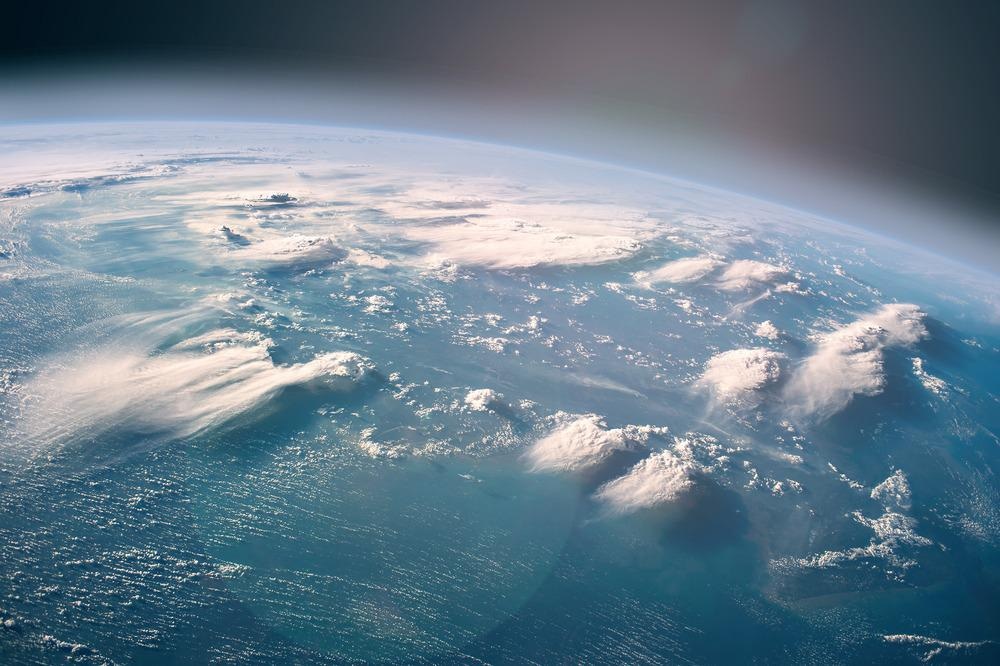Gravity sensors are precise devices that detect minute localized changes in the force of Earth’s gravity caused by variations in rock or other materials’ density underground. The latest development in gravity sensing – quantum gravity sensors – can detect subterranean features with greater detail than ever before.

Image Credit: Vladi333/Shutterstock.com
What Is Gravity Sensing?
Gravity exerts nearly the same amount of force everywhere on Earth’s surface. However, tiny differences in the force of gravity are caused by varying densities of rock and other materials underground or different distances from the core (altitudes.)
Gravimeters are devices used to measure these minuscule variations in Earth’s gravitational force. Typically, gravimeters worked according to one of two main operating principles: measuring the flight time of a free-falling object over a set distance, or measuring the amount of stretch caused by a set weight hanging on a spring.
Gravity sensors can be sensitive enough to track so-called Earth tides – the movement of the planet’s surface up and down caused by changing distances between our planet and the sun and moon. These tides are like the tides in the ocean, only occurring in rock and soil and shifting it an almost entirely unnoticeable degree.
Gravimeters are typically expensive, often costing in excess of $100,000, large, and heavy - about the size and weight of a car battery or even a large appliance.
Such characteristics have limited the application of gravity sensing in both research and industry settings. The 150 kg devices available just a decade ago were far too heavy to be easily carried into remote locations or mounted on appropriately affordable drones.
This technology was advanced in 2016 by introducing micro-sized gravimeters made from silicon. These SD card-sized devices had a hollow center with a 25 mg piece of silicon suspended by stiff fibrous structures about five μm thick. The silicon piece in the center device bobs up and down slightly in response to changes in gravitational force; this movement is measured with a light detector tracking the silicon piece’s shadow.
Gravity sensing – if accurate enough – has widespread applications in research and industry. Micro-sized gravimeters could be deployed in networks to sense the motion of magma in volcano zones, allowing researchers to understand patterns of magma flow before eruptions. Drone-mounted gravimeters could find underground cavities in exploration or search and rescue operations.
Researchers also use gravity sensors to map large-scale geological activities such as glaciers melting or the alterations to the planet’s crust caused by earthquakes.
Quantum Gravity Sensing
A recent development in gravity sensors brings these applications one step closer: a quantum gravity sensing device has been described that crucially works reliably in the field.
Small, field-suitable gravity sensors have typically required long deployments to create an average baseline that filters out vibration from traffic and weather. To solve this, scientists in the UK developed a gravity sensor sensitive enough to detect a 2 m2 tunnel 0.5 m beneath the surface and robust enough to collect 40 data points per hour.
The sensor drops extremely cold clouds of rubidium atoms (100 million atoms cooled to just above 0 K) and measures the time it takes to fall. Quantum sensing is achieved with laser pulses driving the atoms into a state of superposition. Here, the atoms fall along different trajectories simultaneously before recombining as the trajectories meet up again.
When the particles recombine, they interfere with each other according to the quantum mechanical principle of wave-particle duality. The trajectories are designed so that the patterns of this interference behavior change when the device is over different amounts of gravitational force.
The device measures gravitational force in two rubidium atom clouds separated about one meter from each other vertically. Scientists use data from both clouds to gather accurate data about the gravitational force at the site; comparing the two datasets helps them remove unwanted noise such as vibrations, magnetic field fluctuations, thermal changes, and any aberrations in the sensing devices themselves.
This design, referred to by researchers as an hourglass configuration, enables a so-far unseen level of robustness in gravity sensing. Although the best performing quantum sensor reported to date is about 30 times more sensitive than this device, the ability to use the sensor in the field and obtain results quickly is gaining interest.
A field-suitable quantum gravity sensor like this one could see applications in numerous industrial and research settings. Civil engineers could measure underground structures like tunnels, sinkholes, and mine shafts to improve construction surveying and infrastructure projects. Archaeologists could similarly use the technology to find underground sites of interest without damaging the sites or any objects concealed there.
Scientists are now working on making a backpack-sized quantum gravity sensor that can be easily transported. In the future, the technology may progress to enable continuous gravity sensing over a moving platform – recording the fluctuations of Earth’s gravity with extremely high geo-spatial resolution.
Continue reading: How Could Quantum Sensing Transform Industries and our Society?
References and Further Reading
Choi, C. Q. (2022). New Quantum Sensor Sees Beneath the Beneath. IEEE Spectrum. [Online] Available at: https://spectrum.ieee.org/quantum-sensors-gravity-birmingham.
Cookson, C. (2022). Quantum gravity sensor opens window into world beneath our feet. Financial Times. [Online] Available at
Middlemiss, R. P., A. Samarelli, D. J. Paul, et al (2016). Measurement of the Earth tides with a MEMS gravimeter. Nature. Available at: https://doi.org/10.1038/nature17397.
Perkins, S. (2016). Tiny gravity sensor could detect drug tunnels, mineral deposits. Science. Available at: https://doi.org/10.1126/science.aaf9852.
Stray, B., Lamb, A., Kaushik, A. et al (2022). Quantum sensing for gravity cartography. Nature. Available at: https://doi.org/10.1038/s41586-021-04315-3
Disclaimer: The views expressed here are those of the author expressed in their private capacity and do not necessarily represent the views of AZoM.com Limited T/A AZoNetwork the owner and operator of this website. This disclaimer forms part of the Terms and conditions of use of this website.